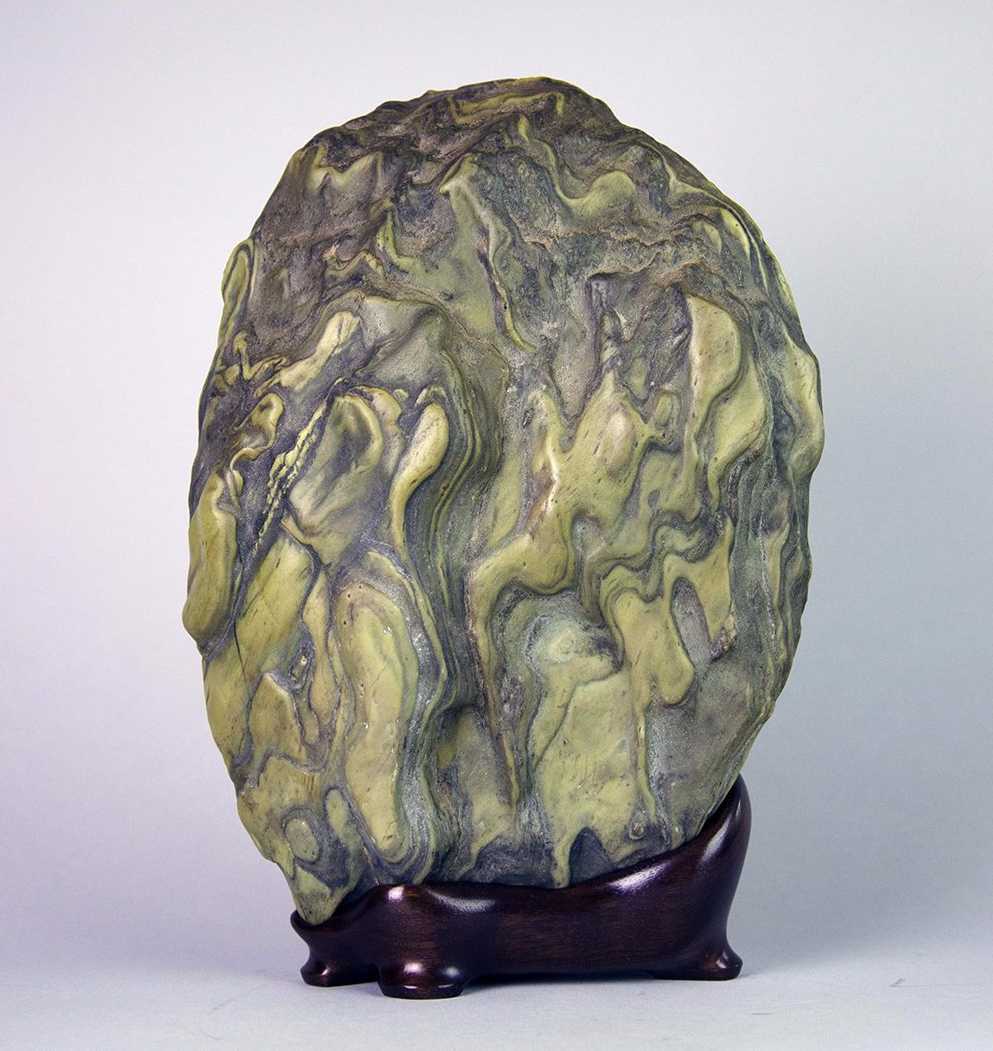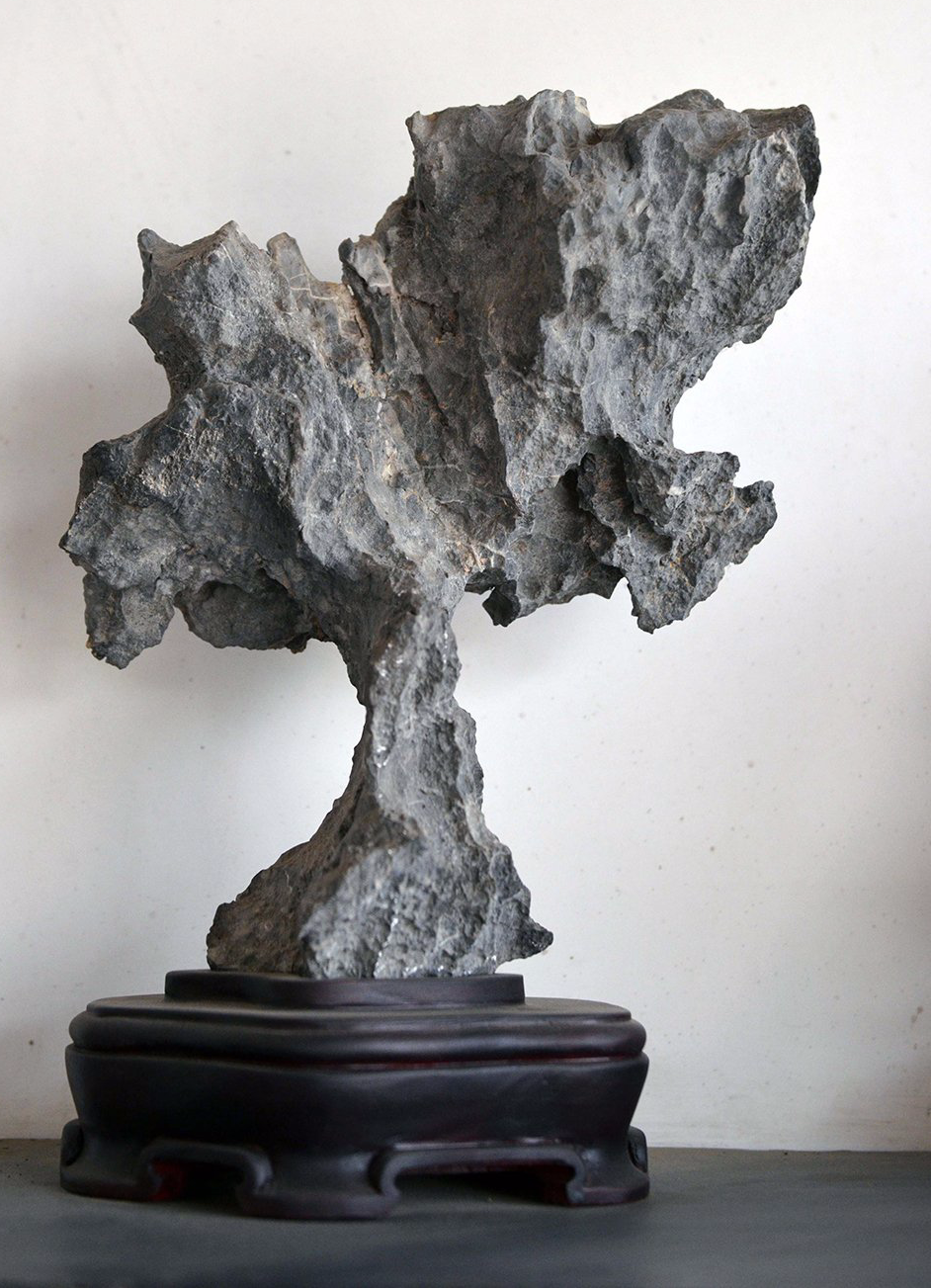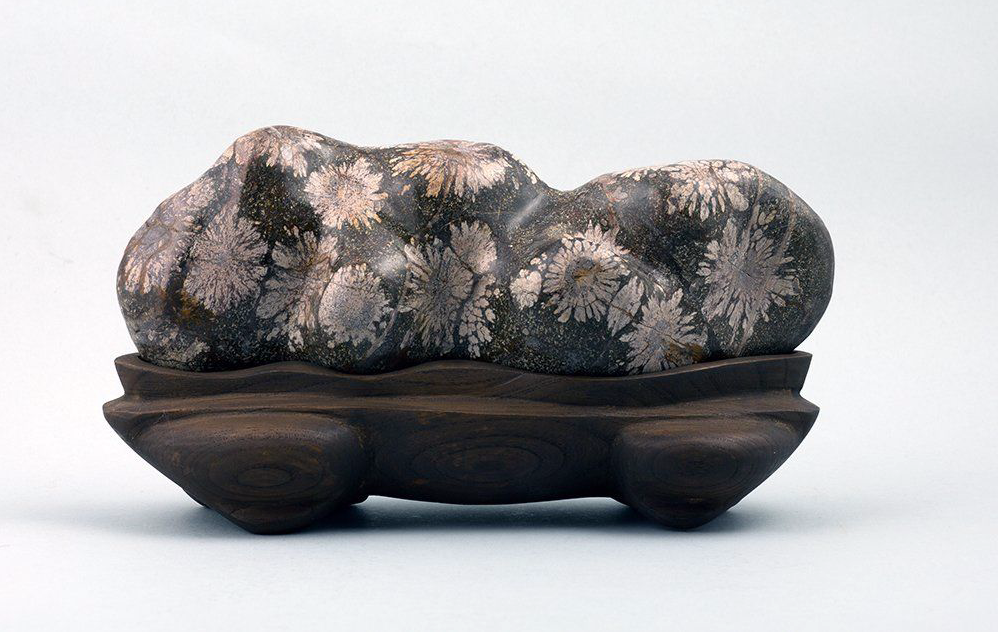What is a Viewing Stone?Exploration of what Distinguishes a Rock from a Viewing Stone
By Richard Turner, March, 2017
For purposes of argument, let’s say that a viewing stone is a rock, intimate in scale, that has been selected and displayed for the purpose of aesthetic appreciation. The very first thing we notice about this definition is that the “rock” becomes a “stone”. Although the two terms are, for the most part, interchangeable, the transformation of the term “rock” into the word “stone” is representative of the entire enterprise of creating a viewing stone.
The phrase “Intimate in scale” is intentionally subjective. It is meant to include stones that range in size from a pebble that fits comfortably in the palm of the hand to a stone that might be half the height of an adult man or woman. There are, of course, exceptions to this, especially at the larger end of the scale where distinguishing between what is a large viewing stone and what is a small garden rock is an exercise in futility.
“Selection” comes next. This is the gesture that the subtle change in terminology, from rock to stone suggests. The simple act of designating a rock as a "viewing stone" is the first, and perhaps the most significant modification one can make in the life of that object. It changes our perception of its status, its life and utility. The relocation of a stone from its natural habitat confirms the original designation and changes the found object from an ordinary rock to a viewing stone that invites close examination and perhaps contemplation, and in some cases, even veneration.
“Display” is the physical manifestation of “selection”. It is the public face of the private decision. It is here that the activity of the collector most closely parallels that of the artist. Choosing the best face of the stone, the appropriate angle for its display, the type and design of the base and the plants or objects to accompany the stone are decisions that are directly analogous to the choices that an artist makes when distributing paint across a canvas or framing an image through the lens of a camera. Actual alterations of a stone— subtle watering or waxing or more dramatic interventions such as basal cuts, acid washes and sculptural enhancements— further complicate distinctions between the practice of the viewing stone collector and that of the studio artist.
The phrase “aesthetic appreciation” indicates a stone chosen for its formal qualities and/or its evocative potential rather than for its mineral value or material utility. One may be attracted to a stone purely for the beauty of its texture, form, color or composition. Equally, a stone’s appeal may lie in its capacity to inspire thoughts of a distant mountain range, a human figure or the energy that animates the universe.
Whatever the reason(s) for your attraction to a particular stone, a viewing stone is a stone for viewing and it is you the collector who determines how, initially at least, your stone will be viewed. In the course of selecting and displaying a stone you become familiar with its characteristics and you construct a context for the stone that guides the perceptions of others towards the appreciation of those qualities. And if you go on to exhibit the stone, engage in discourse about the stone with fellow connoisseurs or write about the stone, you augment this context that you initiated when you first picked the rock up from a stream bed or desert wash and saw it as a potential viewing stone.




